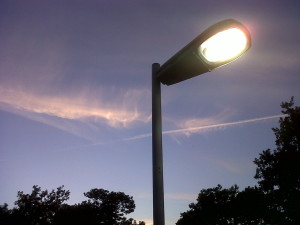New research has shown that the Common Pipistrelle Bat, often found in urban areas, has its foraging and thus feeding activity disrupted and constrained by artificial lighting, especially where there are larger gaps in tree cover:
http://www.dailymail.co.uk/sciencetech/article-3111115/Bats-disappearing-cities-Artificial-lights-creating-ecological-dead-zones.html
Bexley Natural Environment Forum strengthened Bexley Council’s commitment to wildlife corridors in the Local Development Framework, and several were identified in the yet-to-be-approved Sites of Importance for Nature Conservation review. But the Forum has called for these to be made more real for ground-dwelling species, as some of the ‘corridors’ are, in reality, just stepping stones separated by numbers of roads that only flying species can actually move between. The group has further said, in its submission to the first round of budget consultations, that cutting the intensity and duration of light nighting would generate very significant savings and major environmental benefits. It went on to argue that priority should be given to reducing light pollution around and between Sites of Importance for Nature Conservation with known Bat occupation, so as to create corridors that do not in practice contain barriers for these species as well. The principle of lighting cutbacks was rejected by the Council at the time, but proposed in the second budget consultation, but we have yet to hear if, when and how lighting reduction measures are to be implemented in practice.

The Bexleyheath railway line corridor is designated as a SINC as well as an important wildlife corridor, but physical obstructions are not the only barrier to species movement. At least this light at Barnehurst station is a modern design that directs most of the light downwards. (Photo: Chris Rose)
Indeed the researchers cited said that: ‘The logical next step for this research would be to feed these findings into the town and city planning process, by identifying areas where bat populations are low and strategically dimming or shielding street lamps and narrowing gaps in the local tree networks.’
Ironically a number of SINCs with Bats, such as Bursted Woods, Franks Park and Shenstone Park are afflicted by poorly designed bulkhead and other lighting on adjoining schools, which spew light across their boundaries. More recently, the Council swallowed the Anderson Group’s claim that there would not be any negative effect on Bats from being allowed to build right up close to the remaining woodland strip in Erith Quarry, despite the mounting evidence of negative impact of lighting on Bats and the fact that all species in the UK are supposed to be protected. The argument appeared to be that because very few bats had been recorded, it didn’t actually matter much anyway which is, of course, the exact opposite of any rational pro-conservation position ……..
______________
